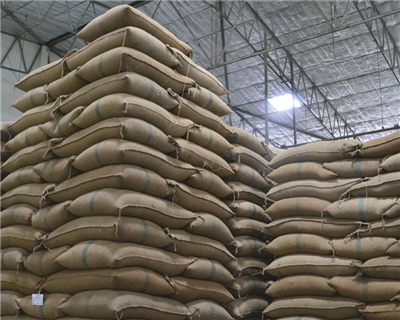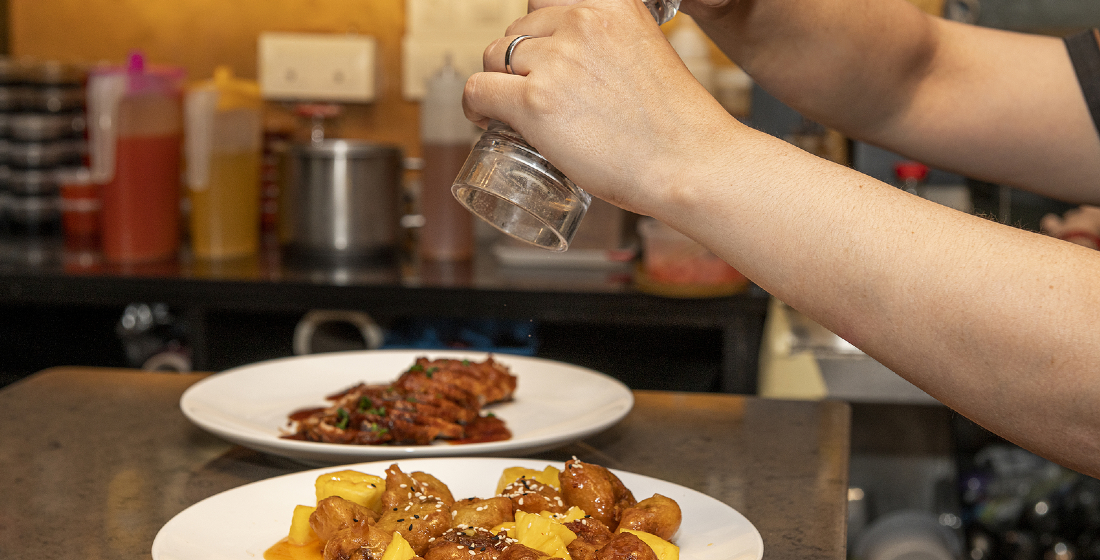The first ‘modern’ commodity exchanges in Africa were created in Zambia and Zimbabwe in 1994, and in South Africa in 1995. While the first two failed, the South African Futures Exchange (SAFEX), a response to the government’s withdrawal from agricultural trade, went on to become Africa’s largest.
A little over a decade later, 2008 saw the launch of the Ethiopian Commodity Exchange (ECX), which is now the second largest. Unlike the earlier initiatives, ECX was a government venture, buoyed by massive government and donor support: it showed that a commodity exchange can be successful even in a country with poor infrastructure and an underdeveloped commodity sector. Meanwhile, Malawi’s Agricultural Commodity Exchange (ACE) has achieved sustained volumes despite lacking such massive support.
A count of African exchange initiatives shows that there are, or have been, exchange initiatives of some sort in 28 countries, including numerous national initiatives alongside a few ambitious and wellfunded sub-regional and regional ones.
There is a widespread view that exchanges have the potential to change the landscape of commodity finance in Africa. But crucial to the development of exchanges is the introduction and widespread use of a viable warehouse receipts system.
And as Lamon Rutten, manager of policies, markets & ICT at the Technical Centre for Agricultural and Rural Cooperation (CTA), declared at the start of the session, the link between warehouse receipts and commodity exchanges is clear, as it is a process that enables farmers to get better rates in a more secure system.
Adam Gross, investment and capital markets advisor, NEPAD Business Foundation, South Africa, outlined the fundamentals of commodity exchanges. He stated: “A successful warehouse receipt system benefits from a commodity exchange.
“First, you need the exchange for valuation of the crops. A commodity exchange allows a bank to clearly see the value of the collateral against which they finance warehouse receipts. In this way, they can be less risk averse in terms of the loan to value ratios they set.
“Second, should there be a default, a bank may need to seize and liquidate collateral. Having a liquid commodity exchange improves the efficiency of this process, and thus makes banks more likely to lend in the first place.
“Third, a commodity futures exchange enables mitigation of price risk through hedging the position. In South Africa, because many farmers lock in a forward price, the loan to value ratios can reach as high as 100%.
“Fourth, clearing and settlement is so important and equally crucial to the whole process. A disciplined settlement cycle ensures timely execution of transactions without worries about quality and quantity disputes or payment delays.
“All of these elements are important for the banks, as it means that there is settlement of the physical side at the right time and in the right amount. This system works in Latin America, Asia, Eastern Europe and South Africa, but we still don’t have this proper process in the rest of sub-Saharan Africa. This should be critical for Africa going forward.”
Kristian Schach Møller, chief executive officer, Agricultural Commodity Exchange for Africa (ACE), Malawi, provided a presentation to delegates of how the ACE exchange has developed in Malawi.
“The ACE commodity exchange in Malawi is based on three pillars: market information, trade facilitation and the warehouse receipt system,” stated Møller.
“We really want to reach the smallholders, we promote forward contract; we don’t want them to lose out because of price speculation. We also want to ensure that farmers get their warehouse receipts earlier in the season, which would help them in their own cash flow.
“We traded 60,000 tonnes last year, and we have available certified storage today of 155,000 tonnes. To date this year we have financed $12 million worth of crops.”
And in Malawi, he noted: “A lot of the demand for warehouse receipts has been developed by the World Food Programme (WFP), because they are the buyer of a lot of the receipts.”
Rod Gravelet Blondin, senior advisor, East Africa Exchange (EAX), Rwanda, who was also highly instrumental in building the South African SAFEX agricultural commodity exchange, explained what he and others are now doing in relation to the EAX operations.
“We look to set up viable and sustainable commodity exchanges. And this is because we bring 100% guaranteed collateral management with that commodity exchange. We bring cutting-edge technology and we guarantee settlement for the users of the exchange,” says Blondin.
“There is one single word that is essential for a successful commodity exchange and that word is integrity. If you don’t have that then the exchange delivers nothing.
“And collateral management is an essential element. If you link a secure and recognised collateral management service and system to an exchange, the seller knows what he is getting sold. An exchange is effectively no more than secure payment for secure product. And I believe that commodity exchanges can bring so much to this continent of ours.
“We start with spot trading, but we do need to deal with price risk. Derivatives bring a huge ability to manage those price risks. So, we need to develop exchanges with integrity.”
Blondin added: “Warehouse receipts in the past were just delivery mechanisms nowadays warehouse receipts backed by solid collateral management allows you to access finance. Warehouse receipt paper is valuable, and needs to be kept in a vault the warehouse holds a copy and the depositor has a copy and the original is traded. But we need to move away from this which is why we have developed the electronic receipt process.
“Anyone setting up an exchange today, should immediately opt for an electronic receipt system. They give you a full audit trail, and as such it really minimises fraud. With SAFEX for example, this system is housed with PricewaterhouseCoopers (PwC) so you have that added security too.”
The concept of multiple exchanges
Taking the discussion back to the delegates, session moderator Rutten, noted: “The tag line of this session was ‘trade with trust’. You can build integrity, so that people can trade commodities with trust. We want to see the development of islands of excellence.”
In a question from the floor, Elenwor Ihua, executive director, Nerfund in Abuja, Nigeria, asked: “Can you have multiple exchanges in any one country?”
Møller of ACE responded: “I think if you have the right regulation then it is healthy to have multiple exchanges. It should be free for all. The dynamics of how each exchange works should be the same. ACE is a donor funded programme. So, this gives us an advantage to implement these services to rural areas not all exchanges will be able to have such a scope. But in Malawi, where I work, we have a group of farmers with one to two acres who made $30,000 profit combined using warehouse receipts.”
Blondin also provided significant insight from his many years of experience: “Yes multiple exchanges in any one country, of course. You can break them up into geographic areas or product areas as they do in China for example. The crucial factor for survival is: does the exchange add value? Does it have integrity?
“The only real downside to watch out for is that the spread of multiple exchanges in any one country does not impact on liquidity. In the model we have developed, the exchanges will lease the warehouses. In Nigeria, there are loads of warehouses available. But what is really needed is management of the exchanges.
“In South Africa, SAFEX has probably failed in reaching smallholder farmers. So how could you remedy that? This would be possible by working with cooperatives and aggregators.
“We (EAX) are now working with a collateral manager Collateral Management International (CMI) from South Africa for the start of any exchange.
“When we are using spot contracts, you can use any commodity. But when you go into derivatives it is much more limited. But the more confidence there is in the collateral management company, then the better it is.
“Is there a risk for the bank? If prices fall, then we allow the bank to liquidate the product. Going forward, we would like the African Development Bank to be part of a guarantee fund that could be put in place to allow a commercial bank to lend a higher amount to the producer in a more secure manner.”
Rutten, who has many years experience in establishing a commodity exchange in India, remarked: “In India, we set up an exchange which has facilitated more than $8.6 billion over the past few years. And in that set up, the collateral manager works for the bank. In Africa, it is
ridiculous that a government should want to manage an exchange. It needs to be competitive. This is good for everybody.
“In the US, for example, when commodity exchanges were first being established, they spread to have more than 40 of them. Now there are four. There is natural consolidation.”
Gross also sees the benefits in having a multiple exchange system and even broadening this to a regional exchange. He stated: “Yes, it can be encouraged as it leads to beneficial experimentation giving the market meaningful choices about what works best. Competition also tends to make exchanges more responsive to their users. We should also think about national versus regional exchanges. Ultimately, if you have entrepreneurs that want to build a regional exchange, then yes I believe they should have the freedom to go for it, subject to compliance with relevant regulations.”
Zambia in the spotlight
A question on the development of a commodity exchange in Zambia came from one of the delegates. The question is particularly relevant as some years ago an agricultural exchange was set up, only to flounder because the exchange did not work for all the parties involved.
Outlining some of the activity that ACE is involved in, Møller stated: “ACE has tried to put out feelers to do trades for Zambia, but there is an overall reluctance for Zambia to get involved. EAX is also looking there.
“ACE is trying to build some regional trade corridors, ie with Harare in Zimbabwe for soybean meal. There is a big liquidity problem in Zimbabwe right now. But by buying soya meal through a warehouse receipt system we can get round some of these liquidity problems. And a commodity exchange can be a driver of these regional trade corridors. It’s all about facilitating it.
“We are looking to create some regional corridors. We are looking at Zambia, Mozambique and Tanzania for these corridors to grow naturally. Regional exchanges are the way to grow. And electronic exchanges can really make this a lot easier. In addition, this will help with overall food security. Regional exchanges really make sense.”
A delegate from the floor commented that she has the impression that the government in Zambia is not keen on commodity exchanges now because it thinks they benefit commercial farmers too much and neglect the interests of smallholders.
Responding to this, Gross from NEPAD, said: “In Zambia, in an early commodity exchange model, it appeared as though the exchange may have been driven by the traders. But a lot of value does come from commercial farmers and large traders they are essential to liquidity, efficiency and commercial sustainability for the exchange. However, an exchange should seek to add value and ultimately provide benefit to all stakeholders both sides of the transaction and in Zambia that means the smallholder farmers. Exchanges also therefore have to strive to be inclusive and transparent.”
Rutten of CTA added: “You can’t have an exchange that only benefits the sellers. It needs to benefit buyers. Ethiopia, Malawi and EAX are all examples of where exchanges have succeeded.”
And, in a final question on the use of insurance, Blondin reiterated the importance of using an experienced and knowledgeable collateral manager. He stated: “There will always be risks in agriculture. Insurance is just one option or tool that can be used. EAX uses a very well organised collateral manager for its activity.” In addition, Møller interestingly revealed that ACE is talking to ATI (African Trade Insurance) about the development of a warehouse bond for Malawi.
Final message
In concluding the session, moderator Rutten asked the three panellists to provide a brief final word on the future development of commodity exchanges in Africa.
Møller at ACE, said: “I would like to have some fund managers to set up the concept of the Agriculture Storage Investment Fund (ASIF), so that we can facilitate a rural storage infrastructure for the private sector and thereby significantly scale the warehouse receipt system. I look forward to the day when ACE doesn’t have to rely on funding from development partners.”
And Gross stated: “I feel that governments should put in place the licensing and regulatory framework and should let any entrepreneur that meets the licensing criteria come and set up commodity exchanges freely, rather than there being some kind of approach to pre select the winners. Let the market decide their preferences for a business model.”
While Blondin from EAX concluded: “I would second those sentiments. As Mandela said: ‘Let my people go!’”






